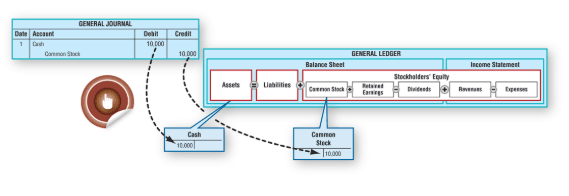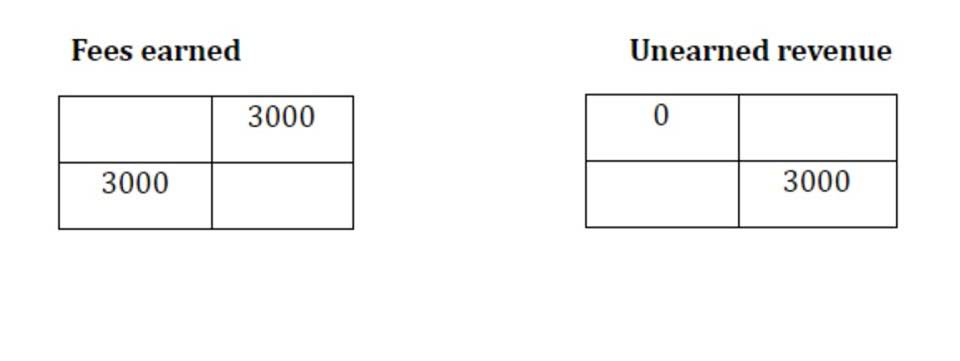
Additionally, we will highlight common mistakes to avoid to ensure the accuracy of closing entries and discuss the impact of these errors on financial reporting. If Paul does not reverse last year’s accrual, he must keep track of the adjusting journal entry when it comes time to make his payments. Since half of the wages were expensed in December, Paul should only expense half of them in January.
Cash Flow

The closing entries are the last journal entries that get posted to the ledger. Suppose a business had the following trial balance before any closing journal entries at the end of an accounting period. Permanent accounts are accounts that show the long-standing financial position of a company. These accounts carry forward their balances throughout multiple accounting periods. The net income (NI) is moved into retained earnings on the balance sheet as part of the closing entry process. The assumption closing entries is that all income from the company in one year is held for future use.
Powerful Benefits of Data Automation for Modern Businesses
- Afterwards, withdrawal or dividend accounts are also closed to the capital account.
- In the realm of accounting management, this wave of automation not only expedites the process but also significantly slashes the risk of human error – say goodbye to missing a zero or misplacing a decimal point.
- Reversing entries are made because previous year accruals and prepayments will be paid off or used during the new year and no longer need to be recorded as liabilities and assets.
- It’s not reported on any financial statements because it’s only used during the closing process and the account balance is zero at the end of the closing process.
- These expenses are often recorded at the end of period because they are usually calculated on a period basis.
- This clears the revenue accounts to zero and prepares them for the next period.
By integrating a journal entry management module, as found in the Highradius suite, organizations can automate the creation and management of journal entries, drastically increasing efficiency. Permanent Account entries show the long-standing financial position of a company. Other accounting software, such as Oracle’s PeopleSoft™, post closing entries to a special accounting period that keeps them separate from all of the other entries. So, even though the process today is slightly (or completely) different than it was in the days of manual paper systems, the basic process is still important to understand. Both closing entries are acceptable and both result in the same outcome.
- The last closing entry reduces the amount retained by the amount paid out to investors.
- The IncomeSummary account has a new credit balance of $4,665, which is thedifference between revenues and expenses (Figure5.5).
- The $1,000 net profit balance generated through the accounting period then shifts.
- The post-closing T-accounts will be transferred to thepost-closing trial balance, which is step 9 in the accountingcycle.
- Real accounts, also known as permanent accounts, are quite different compared to their temporary equivalents.
- By maintaining your bookkeeping, you can ensure that you are constantly kept informed.
- The company transfers temporary account balances to the permanent owner’s equity account, Owner’s Capital, using closing entries at the end of each accounting period.
How to close an income summary account?
The net effect of both journal entries have the same overall effect. Making the reversing entry at the beginning of the period just allows the accountant to forget about the adjusting journal entries made in the prior year and go on accounting for the current year like normal. A temporary account used during the closing process to summarize revenue and expenses. There is no future benefit or utility from income-expenditure accounts.
- It might be helpful to look at the accounting for both situations to see how difficult bookkeeping can be without recording the reversing entries.
- When closing entries are made, the balances of temporary accounts, such as revenue, expense, and dividends accounts, are transferred to permanent accounts like retained earnings.
- You should recall from your previous materialthat retained earnings are the earnings retained by the companyover time—not cash flow but earnings.
- By resetting temporary accounts and transferring net results to permanent accounts, closing entries facilitate seamless reporting and compliance.
- Balances from temporary accounts are shifted to the income summary account first to leave an audit trail for accountants to follow.
- Closing entries represent a critical step in the accounting cycle that ensures financial accuracy and proper period separation.
The temporary accounts need to be zero at the end of an accounting period. Closing entries are journal entries made at the end of an accounting period which transfer the balances of temporary accounts to permanent accounts. Closing entries are based on the account balances in an adjusted trial balance. Closing entries are entries used to shift balances from temporary to permanent accounts at the end of an accounting period.


In each temporary account, closing entries also result in a zero balance. The temporary accounts are now ready to gather data for the next accounting period, which will be distinct QuickBooks ProAdvisor from the data from previous periods. Closing entries is entries made to close and clear the revenue and expense accounts and to transfer the amount of the net income or loss to a capital account or accounts or to the retained earning accounts.
Interim Financial Periods
Typically, adjusting entries are made to account for things like accrued revenue and expenses, prepaid expenses, and unearned revenue. These are all transactions that affect the profit and loss of the business during a reporting period, but which are not otherwise reported during the period because they take place at another time. If you paid out dividends during the accounting period, you must close your dividend account. Now that the income summary account is closed, you can close your dividend account directly with your retained earnings account. Temporary accounts are used to track the changes in revenue, expenses, and dividends during a specific accounting period.

In this case, we can see the snapshot of the opening trial balance below. Regardless of size or structure, closing entries are essential for accurate period-to-period financial reporting. While manual closing entries are foundational to understanding accounting principles, most modern businesses use software to retained earnings balance sheet streamline this process. These contents closing entries are automated in modern accounting software. The income summary is a temporary account used to make closing entries.

